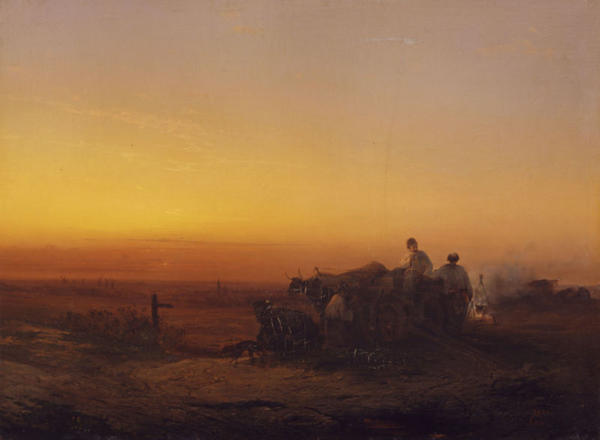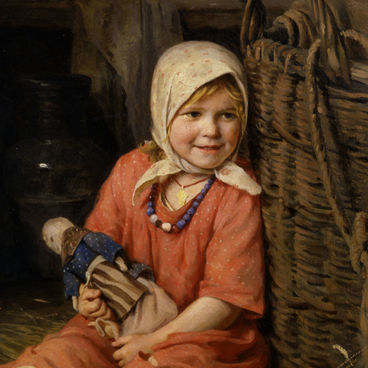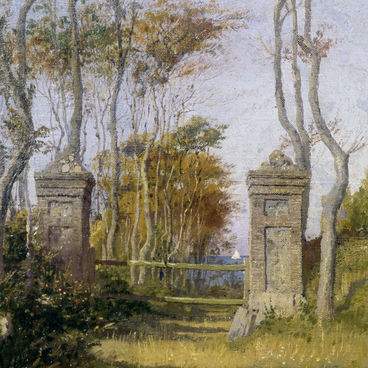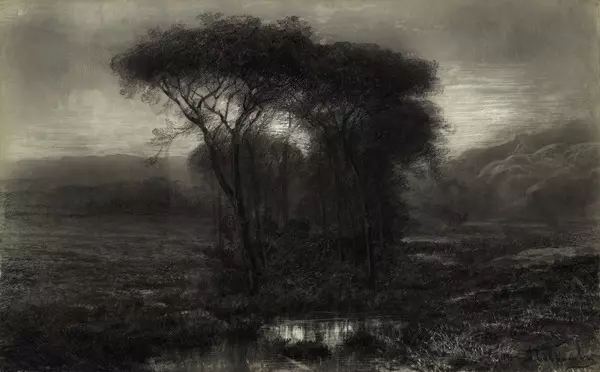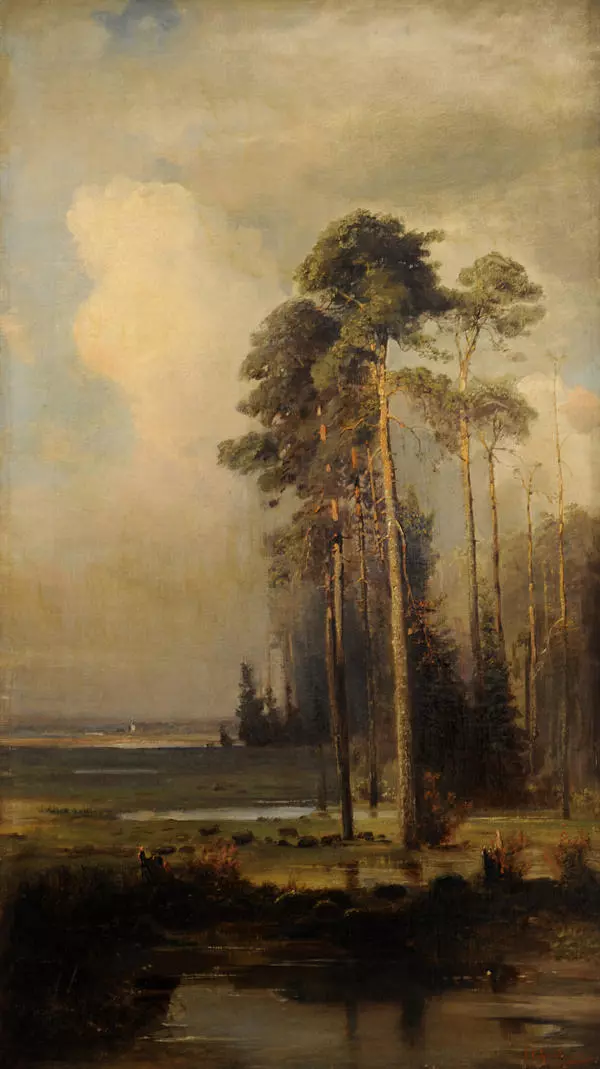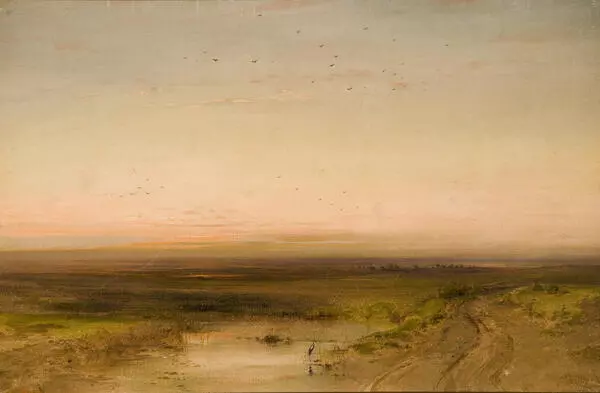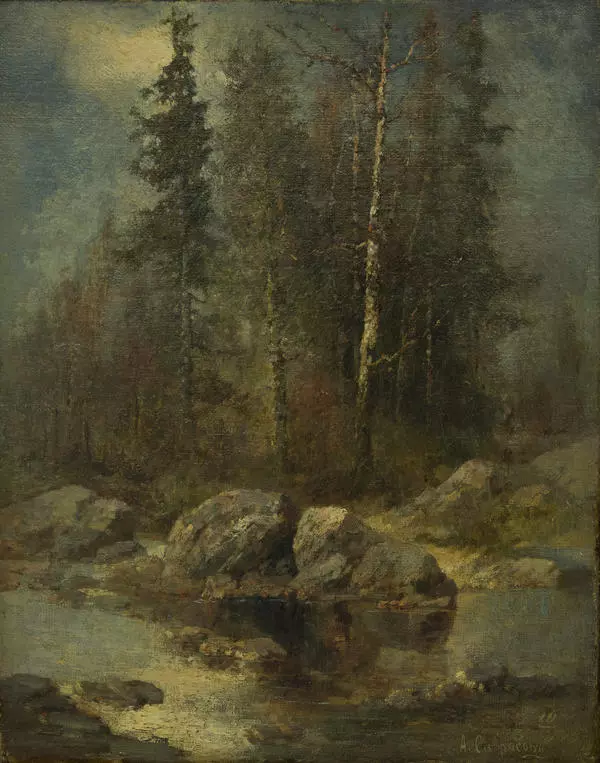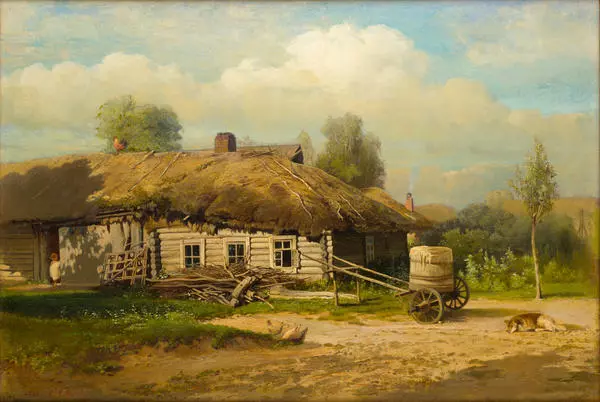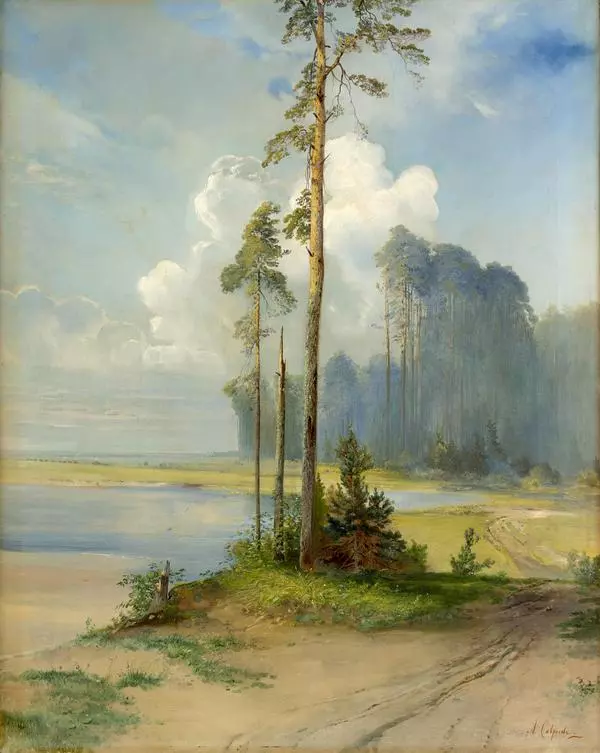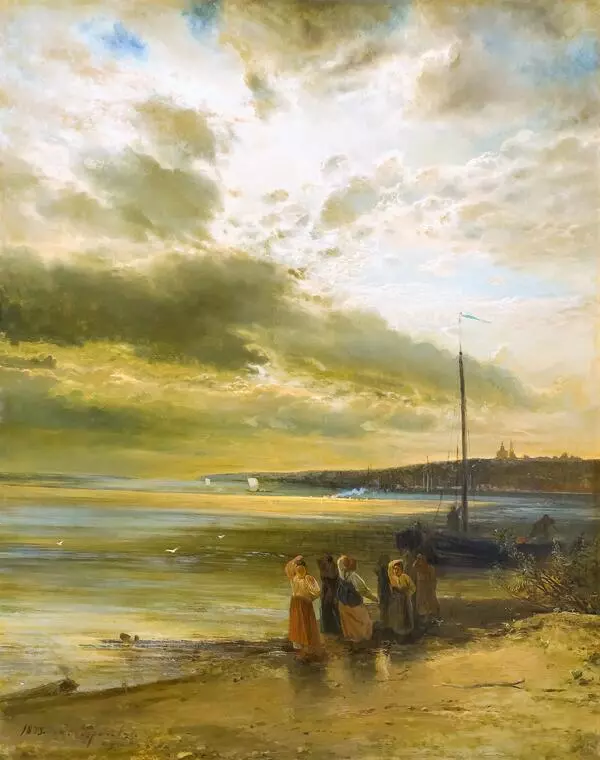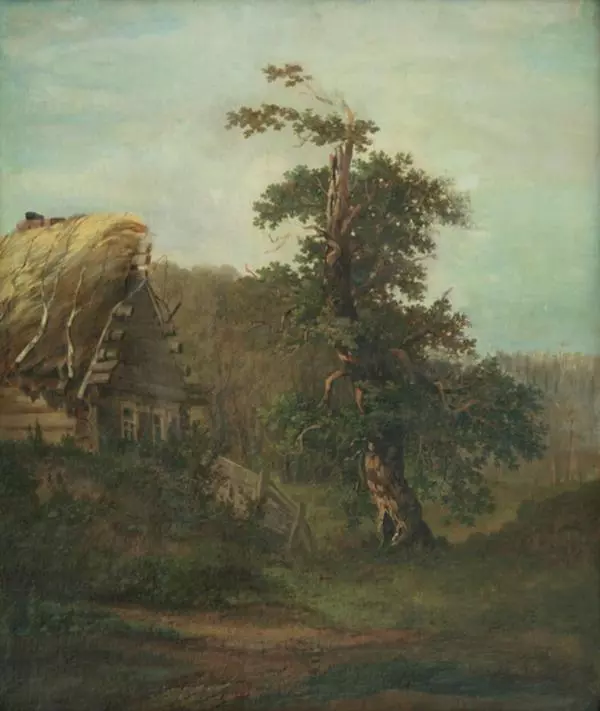Aleksey Savrasov is a landscape artist, author of the famous painting The Rooks Have Returned. The artist was a member of Association of Itinerant Art Exhibitions. The painting Chumaki, displayed at the exhibition, refers to the early period of the artist’s work. The romantic treatment of the nature is characteristic of that period. The artist added the scenes of everyday life to his landscapes.
Savrasov went on a journey to the south of Russia in the early 1850-s. The artist discovered the fine beauty of the Russian great outdoors in the vast and endless steppe landscapes. The name Chumaki was attributed to the salt and wine merchants and fishmongers in the south of Russia. Chumaki reached the Black and the Azov Seas in the ox-driven carts, and thereafter distributed the goods over the fairs. The merchants were frequently exposed to danger; they ran the risk of contracting the plaque or other diseases during the epidemics.
Savrasov depicts the nature’s impressive evening state. Нe portrays the golden- red sunset: the sky is flooded by the orange light which turns a cooler shade, while getting farther from the sun. The sunset sky occupies the bigger part of the canvas. The artist paints the light with transparent glazing – the technique, whereby the half-transparent paints are put in layers over the basic colour. Thus, the artist conveys the subtleties of the colours, one transforming smoothly into another. The low horizon line increases the feeling of the vast expanse.
The artist portrayed the merchants, bedding down. The solemn landscape surrounds the lonely people lost in the vast space of the steppe. The leisurely conversation, the fire kindled, which the food is cooking on, - everything is lit by the setting sun.
The painting gained approval of Grand Duchess Maria Nikolaevna, daughter of Emperor Nicholas I. She was Head of the Academy of Arts, and while familiarizing with the young artists’ works, she took a particular interest in Savrasov’s paintings. Duchess wished to meet the artist in person and invited him to work in her country residency. Thus, the young artist became famous.
Aleksey Savrasov spent nearly twenty-five years teaching in the Moscow Painting, Sculpture and Architecture College. Savrasov’s underlying pedagogical principle was “study and feel”. He urged his students to observe and comprehend the essence of the nature. The celebrated Russian artists Isaak Levitan, Konstantin Korovin and Sergey Svetoslavskiy were his disciples. All of them spoke of their maitre with the highest regard and gratitude.
Savrasov went on a journey to the south of Russia in the early 1850-s. The artist discovered the fine beauty of the Russian great outdoors in the vast and endless steppe landscapes. The name Chumaki was attributed to the salt and wine merchants and fishmongers in the south of Russia. Chumaki reached the Black and the Azov Seas in the ox-driven carts, and thereafter distributed the goods over the fairs. The merchants were frequently exposed to danger; they ran the risk of contracting the plaque or other diseases during the epidemics.
Savrasov depicts the nature’s impressive evening state. Нe portrays the golden- red sunset: the sky is flooded by the orange light which turns a cooler shade, while getting farther from the sun. The sunset sky occupies the bigger part of the canvas. The artist paints the light with transparent glazing – the technique, whereby the half-transparent paints are put in layers over the basic colour. Thus, the artist conveys the subtleties of the colours, one transforming smoothly into another. The low horizon line increases the feeling of the vast expanse.
The artist portrayed the merchants, bedding down. The solemn landscape surrounds the lonely people lost in the vast space of the steppe. The leisurely conversation, the fire kindled, which the food is cooking on, - everything is lit by the setting sun.
The painting gained approval of Grand Duchess Maria Nikolaevna, daughter of Emperor Nicholas I. She was Head of the Academy of Arts, and while familiarizing with the young artists’ works, she took a particular interest in Savrasov’s paintings. Duchess wished to meet the artist in person and invited him to work in her country residency. Thus, the young artist became famous.
Aleksey Savrasov spent nearly twenty-five years teaching in the Moscow Painting, Sculpture and Architecture College. Savrasov’s underlying pedagogical principle was “study and feel”. He urged his students to observe and comprehend the essence of the nature. The celebrated Russian artists Isaak Levitan, Konstantin Korovin and Sergey Svetoslavskiy were his disciples. All of them spoke of their maitre with the highest regard and gratitude.

